Where Are They Now? How 5 Iconic Cars Have Transformed

Many of the cars we see on the road had humble beginnings and have changed quite a lot over the years. Let’s take a look at where these automotive nameplates came from and how they’ve grown.
Toyota Corolla
The popular Toyota Corolla compact debuted in 1966 but hit North America in 1968. It was available as a coupe, sedan or wagon, and had a 90-inch wheelbase. Under the hood was a 1.1-liter four-cylinder engine that made 60 horsepower that was sent to the rear wheels through a four-speed manual transmission. It had a total length of 151.5 inches and was 58.7 inches wide. It also stood at 54.3 inches in height. Starting prices were about $1,700 which is just over $12,000 today. It weighed just under 1,700 lb, and featured drum brakes for all four wheels.
In 2017, the Corolla starts at just over $19,000, and packs a much more powerful engine under the hood, a 1.8-liter four-cylinder that sends 132 horsepower to the front wheels, through either a six-speed manual transmission or a continuously variable transmission. Its wheelbase is 106.3 inches and it measures at 183 inches long. Height is just 57.3 inches while width is 69.9 inches. It weighs in at 2,840 lb and comes standard with front disc brakes and rear drums (hey, it’s tradition, after all).
The Verdict:
That means in the span of 51 years, the car grew more than two and a half feet longer, about eleven inches wider and three inches taller. The engine has become over two times more powerful, and now sends power to the front wheels, and the car got 50 percent more gears (in manual form). It’s also nearly $7,000 more expensive too, meaning it got about $137 more expensive per year. It maintains drum brakes for the rear wheels (in base L trim) and weighs a whopping 1,100 lb more, packing on about 21 pounds per year; someone call a doctor, is that kind of weight gain healthy?
See Also: 2017 Toyota Corolla Review
Ford F-150
The Ford F-series as we know it debuted in 1948, with three models: the F-1 for half-ton, F-2 represented three-quarter ton models, and the F-3 was what we’d call a heavy duty truck. Apparently the most common models were the F-1 with a six and a half foot bed and the F-2 and F-3 Express models with an eight-foot bed. Two engines were popular: a 95-horsepower 3.7-liter six-cylinder or a 100-horsepower 3.9-liter flathead V8. It could be had with a three- or four-speed manual transmission. The F-1 featured a 114-inch wheelbase, while the F-2 and F-3 stretched past 122 inches. The F-1 started at $900, or about $9,285 today. In terms of trucking features, the F-1 and F-2 had all-steel beds with pressed in skid-strips. They could also be equipped with a hardwood subfloor and the load space of the bed was measured at 45 cubic feet.
While bed sizes haven’t changed much over the years, the needs of the buyers have. The most popular version of the modern aluminum-bodied F-150 in 2017 is equipped with 4WD and the 3.5-liter, twin-turbo V6 engine. That engine makes a whopping 375 horsepower and 470 lb-ft of torque (unless you get the Raptor, which makes 450 hp and 510 lb-ft of torque.) It also comes with a ten-speed automatic transmission. Most F-150s also come in Supercrew cab with a five and a half foot bed. On the other hand, the F-250 is commonly equipped with 4WD and a 6.7-liter Powerstroke diesel. The HD truck is commonly found with a crew cab and six and three-quarter foot bed. The smallest wheelbase you can get in an F-150 measures at 122 inches, while the commonly found setup of supercrew and five and a half foot bed features a wheelbase of 145 inches. The longest wheelbase you can get measures in at 156 inches. Load space starts at 52.8 cubic feet with the five and a half foot bed, and goes all the way to 77.4 cubic feet with the eight-foot bed. It’s also worth mentioning that most trim levels come with a bedliner. The 2017 F-150 starts at $28,405.
See Also: 2017 Ford F-150 Review
The Verdict:
Quite a lot has happened to Ford’s truck series over nearly 70 years. Size is one thing that’s really changed, with the F-150 sporting the same wheelbase as the original Ford heavy duty models or over 30 inches longer than that depending on the model. The space in the bed has also increased quite a bit too, increasing from 7 cubic feet to 22 cubic feet more, depending on the model. The engines are a huge leap forward too, with the new model making over three times the power of the engine on the supposedly beefy HD trucks. Sadly, it’s not possible to get a manual transmission any more in the F-150, but there’s now at least six more speeds in the gearbox! Finally, while the new truck doesn’t have fancy hardwood in the bed, it’s at least well protected with bedliner. The price difference is almost $20,000!
Ford Mustang
The iconic pony car debuted in the middle of 1964 measuring in at 181.6 inches in length and 68 inches wide. The wheelbase was listed at 108 inches, and the car had a starting weight of 2,445 pounds. Under the hood you’d find a 2.8-liter straight-six engine that made about 105 horsepower and 156 lb-ft of torque, or an optional 4.3-liter V8 that made 164 hp and 258 lb-ft. There was also a 4.7-liter V8 that made up to 271 horsepower and 312 lb-ft of torque. Engines were paired to manual transmissions with three speeds or four speeds. Alternatively, a three-speed automatic transmissions was also offered. The car started at $2,368 (or about $18,608 in 2017) and included such goodies as black front seat belts, a glove box light, and a padded dashboard.
In 2017, the price of entry into the Mustang club costs $26,085, and nets you a V6 model with 300 horsepower and 280 lb.-ft. of torque. Ford also offers a smaller displacement, turbocharged 2.3-liter four-cylinder engine that makes 310 horsepower and 320 lb.-ft. of torque. Naturally a V8 is also offered, the 5.0-liter with 435 horsepower and 400 horsepower. All cars get six speed transmissions, either a manual or automatic. The wheelbase of the car measures in at 107.1 inches, while the total length of the car is 188.3 inches. It’s also 75.4 inches wide and tips the scales at 3,533 lb (at its lightest.) What do you get for your money? Standout features include a leather wrapped steering wheel, push-button ignition, dual exhaust, LED turn signals and an auto dimming rearview mirror. There’s also other stuff you’d expect in 2017 like Bluetooth smartphone connectivity, USB ports and a bunch of airbags.
See Also: 7 Things You Need to Know About the 2017 Ford Mustang
The Verdict:
Besides those modern feature that just didn’t exist back in 1964, the Mustang actually lost about an inch in wheelbase, but became about 7 inches longer and wider. The car also packed on at least 1,000 more lbs. But makes up for it by being more powerful in every configuration. The least powerful engine in 2017 is still 30 horsepower more than the most powerful engine in 1964, while base-to-base there’s a difference of 195 horsepower. Drivers have at least two more gears to choose from but the price difference is nearly $8,000.
Chevrolet Corvette
The Corvette hit the road in 1953, though it was a limited run of just 300 units in its first year. Each one was a convertible with a two-speed automatic transmission and a 3.9-liter inline six-cylinder engine that made 150 horsepower and 223 lb-ft of torque. The wheelbase measured in at 102 inches and total length of the droptop was 167 inches. It was also 72.2 inches wide and weighed in at 2,850 lb. Since this is a Corvette we’re talking about, it could manage a 0-60 mph time in 11 seconds – yeah, that was considered fast in those days.
It was also the country’s first-ever mass-produced fiberglass-bodied automobile and cost $3,498 (about $31,630 in today’s dollars). You could get any color you liked as long as it was Polo White. Options were very few, but you could get an AM radio for a few extra bucks.
Today the 2017 Chevrolet Corvette is offered as either a coupe or convertible, although even the coupes come standard with removable carbon-fiber roof panels and a lightweight aluminum frame. It still uses a fiberglass body but there’s also quite a bit of carbon fiber. The price of entry into Corvette ownership starts at $56,445 and you get a coupe with a 6.2-liter V8 engine that makes 455 hp and 455 lb-ft of torque. That engine is mated to a seven-speed manual transmission while an eight-speed automatic is available.
It has a wheelbase of 106.7 and a total length of 176 inches. It also had a width of 73.3 inches and tipped the scales at 3,298 lb. The sprint to 60 mph is said to be done in about four seconds and there are far more exterior color options than just white. Additionally, optional extras are plentiful ranging from spoilers and stripes to interior options, as well as performance accessories and mechanical upgrades.
See Also: Chevrolet Corvette Reprises Role of Indy 500 Pace Car
The Verdict:
To say that the Corvette has changed dramatically is an understatement. Sure it’s only nine inches longer and about 500 lb heavier, but the car really changed its personality from a sporty convertible all the way to a hard-core performance machine, with a legendary racing career to its name. It was far more of a limited vehicle back in the ’50s too, and if a Corvette was limited to just 300 units, that’d be a hardcore collector’s model. It has more than double the amount of power and torque and a properly equipped modern Corvette can probably hit 60, come to a stop and hit 60 again in the amount of time it took for the ‘53 to do the sprint to 60. On the other hand, the car became much more expensive, costing at leasr $25,000 more, with top Corvette models these days running over 100 grand with supercar-beating performance.
Honda Accord
The Honda Accord may seem like a boring family sedan but in 1989, it was the first import vehicle to become the best-selling vehicle in the United States. But that popular vehicle was actually a second generation of Accord, with the first generation debuting in America nearly 10 years prior, in the late ‘70s. The first Accord was originally sold as a three-door hatchback, the four-door sedan version of the car debuted later in 1979.
It packed a 94-inch wheelbase and the hatchback spanned 162.8 inches nose to tail. It featured a 1.6-liter four-cylinder engine that made 68 hp. That sounds like nothing today, but it was enough to push that 2,000-lb car around. It originally came with a five-speed manual, but also offered a two-speed automatic. Later, a slightly more powerful 1.8-liter four-cylinder engine found a home in higher trim Accords.
The front-wheel-drive family vehicle cost $3,995 ($17,380 today) and came with a number of features including an AM/FM stereo radio, rear defroster and a remote trunk release. Although EPA testing standards were much different back in the day, Honda boasted that the car could earn 42 MPG combined(!). It’s tough to find exact specs on these old cars, but some sources have the car packing 13 cubic feet of cargo space in the trunk. In case you were wondering, 0-62 MPH happened in about 15 seconds.
Today the Accord is available with two body styles, two engines and a hybrid variant, because, duh, it’s 2017. There’s a coupe, but the more popular model is the sedan, which starts at $23,330 equipped with a 2.4-liter four-cylinder engine that makes 185 horsepower and 181 lb-ft of torque. It comes standard with a six-speed manual transmission, although a continuously variable transmission is optional. Buyers can opt to get a 3.5-liter V6 equipped Accord as well, which makes 278 hp and 252 lb-ft of torque, mated to a six speed automatic. It has a wheelbase of 109.3 inches and a length of 192 inches. The new car earns an EPA rated 30 MPG when equipped with the CVT, and has a cargo capacity of 15.8 cubic feet. Four-cylinder models hit 60 MPH in just 7.6 seconds.
See Also: 2017 Honda Accord Hybrid Review
The Verdict:
Looking at the two of them, the new Accord has grown in length by almost two and a half feet, and even though the engine displacement has increased by less than a liter, it now makes almost three times the power. It achieves highway speeds in half the time too! Manual models get one more gear, but the modern car is rated to return 12 fewer miles per gallon than the old car (although that is not an apples-to-apples comparison due to different testing standards). The new car is slightly more practical, with two more cubic feet of storage in comparison to the old one. Pricewise, the new car is nearly $6,000 more expensive than the old one when accounting for inflation.

Sami has an unquenchable thirst for car knowledge and has been at AutoGuide for the past six years. He has a degree in journalism and media studies from the University of Guelph-Humber in Toronto and has won multiple journalism awards from the Automotive Journalist Association of Canada. Sami is also on the jury for the World Car Awards.
More by Sami Haj-Assaad



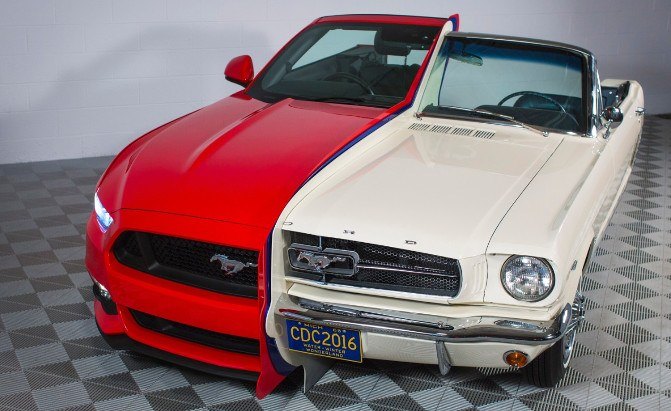

























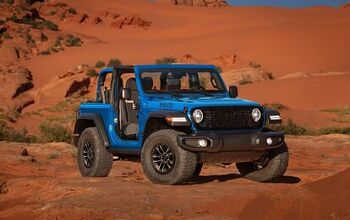

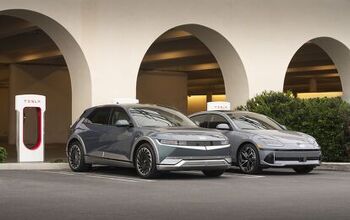
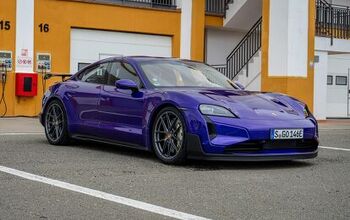
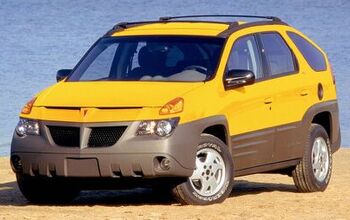

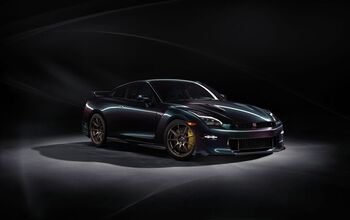

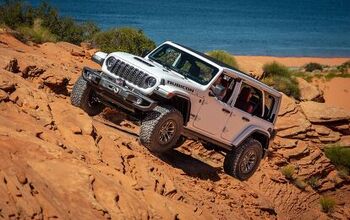

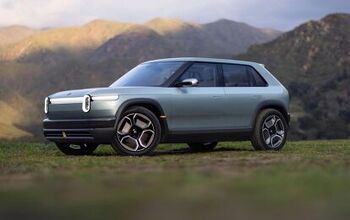

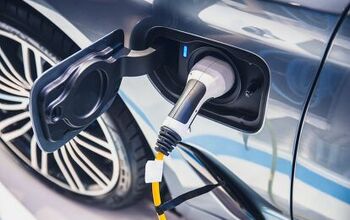
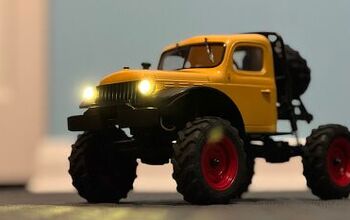
Comments
Join the conversation
The 2017 Toyota Corolla facelift looks like a vacuum cleaner. 2013-16 Corolla looked much better in my opinion.